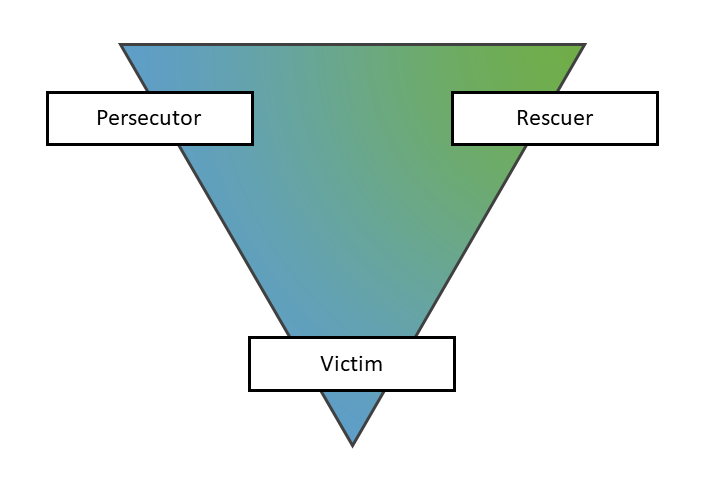
The Karpman drama triangle is a social model of human interaction proposed by Stephen B. Karpman. The triangle maps a type of destructive interaction that can occur among people in conflict.[1] The drama triangle model is a tool used in psychotherapy, specifically transactional analysis. The triangle of actors in the drama are persecutors, victims, and rescuers. Karpman described how in some cases these roles were not undertaken in an honest manner to resolve the presenting problem, but rather were used fluidly and switched between by the actors in a way that achieved unconscious goals and agendas. The outcome in such cases was that the actors would be left feeling justified and entrenched, but there would often be little or no change to the presenting problem, and other more fundamental problems giving rise to the situation remained unaddressed.
The Victim: The Victim in this model is not intended to represent an actual victim, but rather someone feeling or acting like one.[1] The Victim seeks to convince themself and others that they cannot do anything, nothing can be done, all attempts are futile, despite trying hard. One payoff for this stance is avoiding real change or acknowledgement of their true feelings, which may bring anxiety and risk, while feeling they are doing all they can to escape it. As such, the Victim's stance is "Poor me!" The Victim feels persecuted, oppressed, helpless, hopeless, powerless, ashamed, and seems unable to make decisions, solve problems, take pleasure in life, or achieve insight. The Victim will remain with a Persecutor or, if not being persecuted, will set someone else up in the role of Persecutor. They will also seek help, creating one or more Rescuers to save the day, who will in reality perpetuate the Victim's negative feelings and leave the situation broadly unchanged.
books
- Escaping the Drama Triangle in the Three Realms: Relationships, Thinking and Dreaming
Notes
- expanded drama triangle
- relate, reveal and achieve
- similar to reactive coping strategies comply, protect, and control
- disempowerment triangle, but I've also seen it labeled the domestic-violence triangle.